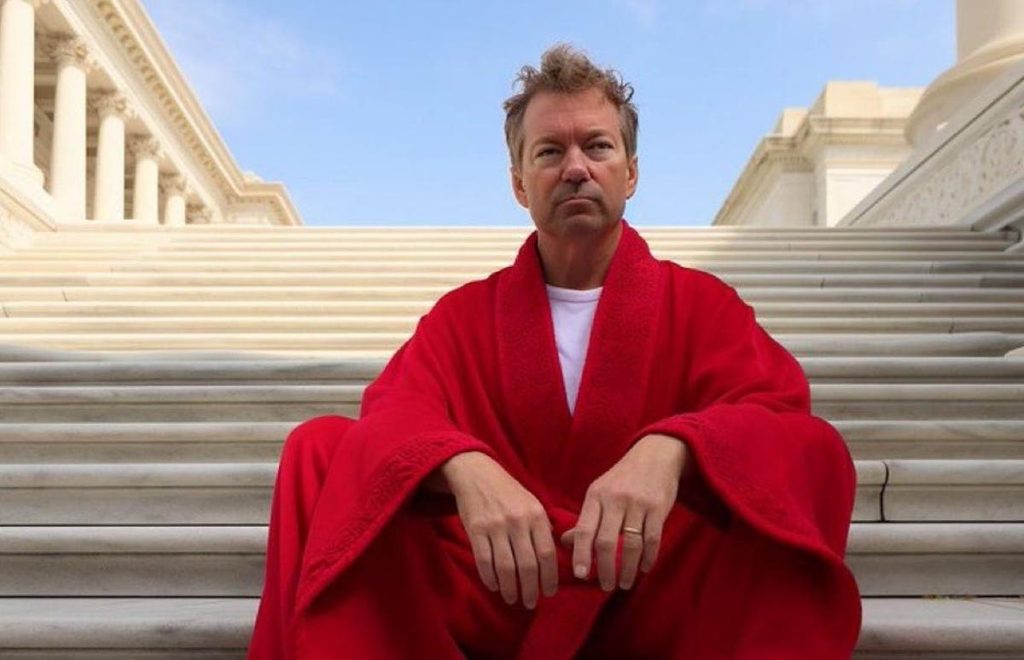An image of Senator Rand Paul from Kentucky has been going viral over the past 24 hours on social media platforms like X and Bluesky. And while it’s being shared as an authentic photo, the image was actually created using artificial intelligence technology.
The fake photo shows Rand Paul sitting in a white t-shirt and red bathrobe, a joke about the controversy surrounding Sen. John Fetterman of Pennsylvania often wearing laid back clothes. Fetterman’s wardrobe has sparked a debate about the dress code for senators, with many conservatives upset that Fetterman doesn’t wear a suit and tie when he’s going to work.
The origin of the image can be traced to an X user called Jeff Charles, who’s received over 2.9 million views on the AI-generated art. But other accounts have received even more views while suggesting the photo-realistic image might be real.
One account, known as Proud Elephant, has received over 6.2 million views. AI-generated fakes have become incredibly popular this year, which tools like DALL-E, Stable Diffusion and MidJourney allowing anyone to create their own images using nothing but text prompts.
Proud Elephant has a blue check mark, which previously meant that it was a “verified” account by X no longer verifies the identity of anyone with a check mark. After Elon Musk bought Twitter in October 2022 and changed the name to X, among a host of other changes, the company stopped verifying identities and allowed anyone with $8 to spend the ability to buy a check mark.
The changes have been controversial, to say the least, and has created an environment where misinformation is spreading more rapidly than ever on the platform. Recently, accounts with blue checkmarks have been spreading lies, like the idea that New Zealand’s former Prime Minister Jacinda Ardern has been harmed by the covid-19 vaccine, that there was recently an Ebola outbreak at Burning Man and fake bone-saw art at Ivanka Trump’s home.
The combination of misinformation on X and AI-generated images is creating a perfect storm of confusion as the U.S. prepares for another presidential election in 2024. Some political campaigns even using AI images to construct alternative realities to raise fears about their political opponents. And it’s almost certainly going to get worse as we get closer to November 2024.
Read the full article here










